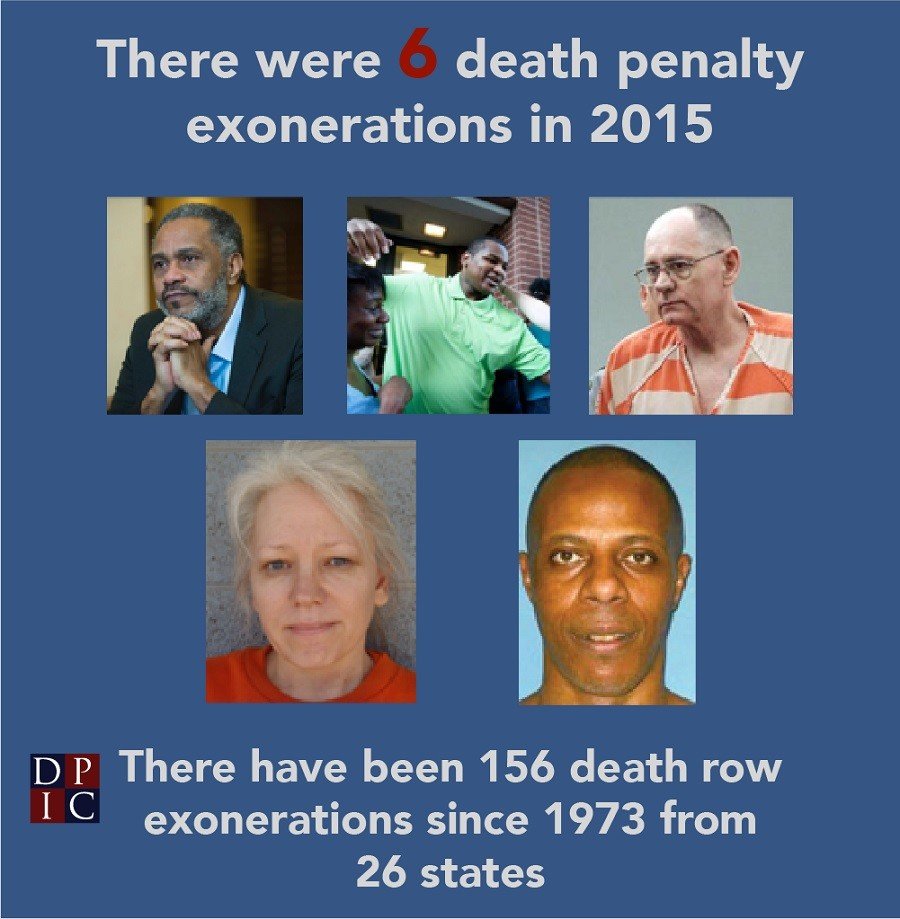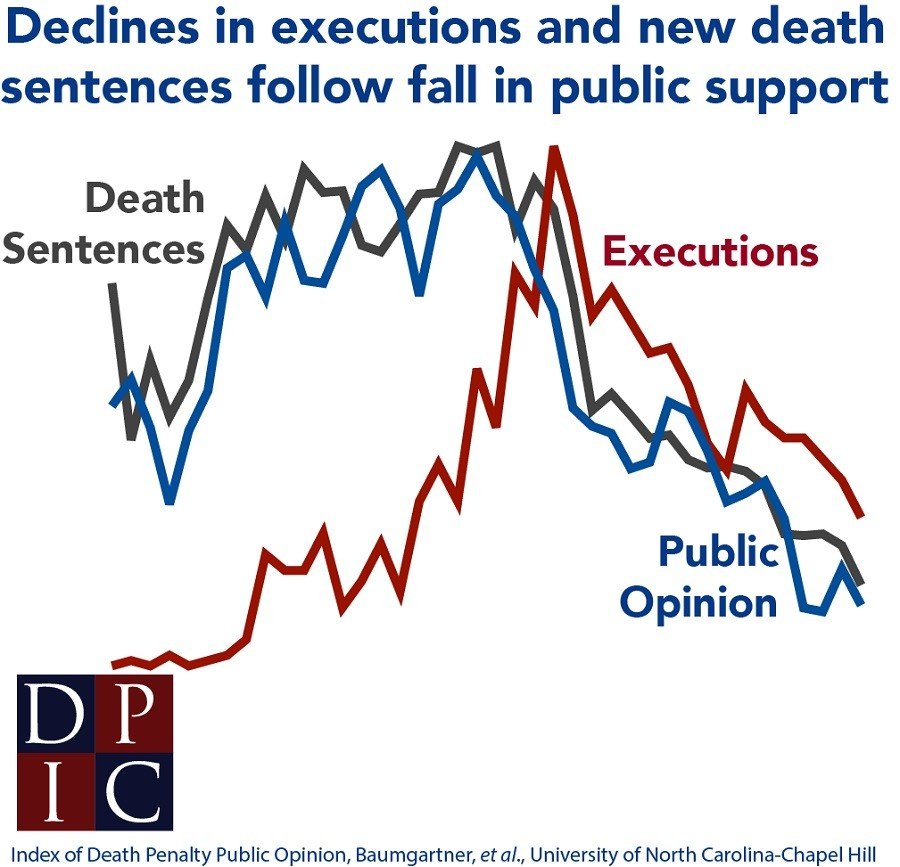Executions on decline in US, death penalty sentences hit record low

The number of death penalty sentences issued and executions carried out in the US both dropped to historic lows in 2015, according to an annual report on capital punishment. Only part of the decline is due to difficulties obtaining lethal injection drugs.
The fewest number of states since 1992 – only six ‒ executed a total of 28 death row inmates in 2015, according to an annual review by the Death Penalty Information Center (DPIC), which tracks data on the death penalty, but does not take a position on capital punishment. Nationally, the number of new death sentences dropped from a peak of 315 in 1996 to a projected low of 49 in 2015, a 33 percent decline from what was already a 40-year low in 2014. A total of 14 states and the federal government issued those sentences.
“The use of the death penalty is becoming increasingly rare and increasingly isolated in the United States. These are not just annual blips in statistics, but reflect a broad change in attitudes about capital punishment across the country,” DPIC Executive Director Robert Dunham, the author of the report, said in a statement.
It is the 12th time in the past 16 years that the number of executions has declined in the US. The number of executions also declined in 2014, the DPIC found in last year’s study, noting that the manner of prisoner deaths had become more brutal and grotesque.
Texas, infamous as the busiest execution state in the nation, once again led the way with 13 executions in 2015. The Lone Star State was followed by Missouri with six, Georgiawithfive, Florida with two, and Oklahoma and Virginia with one each. Oklahoma was forced to halt new executions after a botched one in January, when officials used the wrong drug to stop an inmate’s heart.
Three of those states ‒ Georgia, Missouri and Virginia ‒ were among the 18 states that did not impose any new death sentences this year. Texas, which peaked at 48 death sentences issued in 1999, hit an all-time low in 2015 with two. California led the nation, sentencing 14 people to death, followed by Florida with nine death sentences, and Alabama with six. In September, Arkansas scheduled eight new executions after a 10-year hiatus. A single jurisdiction in California ‒ Riverside County ‒ represented 16 percent of the total new death sentences issued for the year with eight.

Despite the drop in number of death sentences imposed in Texas this year, Rob Kepple, executive director of the Texas District and County Attorneys Association, said that he doesn’t see the state ending its use of capital punishment. He believes the decline can be partially attributed to a drop in Texas’ murder rate.
“If it’s still there so it can be used in the most egregious cases, then maybe that strikes the right balance,” Kepple told the Dallas Morning News. “There’s a lot of people, I think, who still feel the death penalty is a reasoned moral response to some crimes.”
Execution drugs become scarce
States have found it difficult to procure the necessary drug cocktails for their executions. Lethal injection drugs are largely produced in Europe, which has instituted a boycott on exporting them to the US. In March, the top American trade group for compounding pharmacists urged its members to stop working with the drugs that are used to carry out executions.
Although Oklahoma issued an indefinite stay on lethal injections, it became the first US state to legalize the use of nitrogen gas to execute death row inmates if lethal injection drugs are not available. Utah also sought to expand the way in which inmates can be executed, passing a law in March authorizing the use of firing squads if officials cannot acquire lethal injection drugs. It is the only state to approve of the method.
The controversy over lethal injection drugs ‒ including the use of untested cocktails during executions ‒ “had some effect” on the number of executions nationwide in 2015, but “it does not explain the dramatic long-term drop in executions, new death sentences and public opinion,” Dunham told the Miami Herald.
Public opinion on capital punishment
Public support for the death penalty has remained fairly stable over the past decade, with 61 percent in favor, according to Gallup’s annual Crime Poll, released in October. However, the number of Americans opposed to the practice has grown to 37 percent.

Although the Supreme Court upheld the use of lethal injections in June, states are increasingly turning away from the practice. Nebraska banned the death penalty in May – the 19th state (along with the District of Columbia) to do so, and the seventh state since 2007. Connecticut’s Supreme Court overturned the use of the death penalty in August, ruling that capital punishment is unconstitutional. Maryland, which repealed the imposition of new death sentences in 2013, had four men remaining on death row until January, when outgoing Governor Martin O’Malley commuted their sentences.
Oregon Governor Kate Brown extended a 2011 moratorium on the death penalty and Pennsylvania Governor Tom Wolf issued a new moratorium when they took their respective offices in February.












